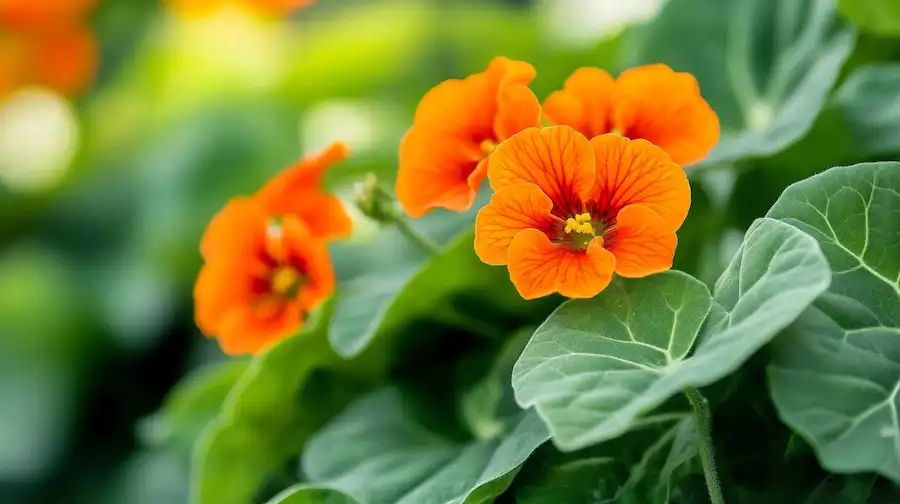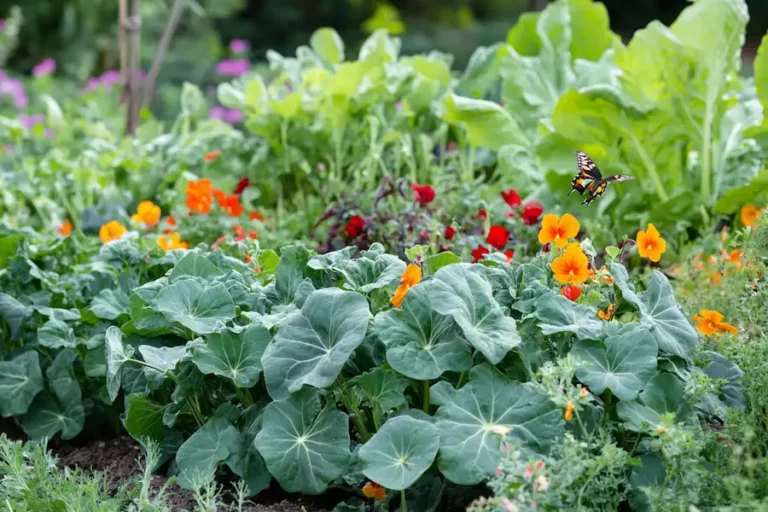Nasturtiums are a gardener’s delight, offering a stunning display of bright orange, red, and yellow blossoms that not only enhance the visual appeal of any garden but also serve multiple functional purposes. These hardy annuals are celebrated for their ease of cultivation, pest-repelling properties, and culinary versatility, making them an indispensable addition to both ornamental and vegetable gardens.
Natural Pest Control
One of the standout features of nasturtiums is their ability to act as a natural pest deterrent. Emitting a peppery scent, they repel common garden pests such as aphids, cucumber beetles, and squash bugs. When planted alongside vegetables like tomatoes, cucumbers, and brassicas, nasturtiums serve as effective companion plants, protecting their neighbors from infestations and reducing the need for chemical pesticides.
Attracting Pollinators and Beneficial Insects
Beyond pest control, nasturtiums play a crucial role in attracting pollinators like bees and butterflies, as well as beneficial insects that prey on harmful pests. Their vibrant flowers serve as beacons, drawing these helpful creatures into the garden, which in turn enhances pollination rates and contributes to healthier, more productive plants.
Edible Delights
Nasturtiums are not just a feast for the eyes; they are also a flavorful addition to the kitchen. Both the leaves and flowers are edible, imparting a peppery zest reminiscent of watercress. Incorporating nasturtium leaves and blossoms into salads, garnishes, or even as components in herbal vinegars adds both visual appeal and a spicy kick to culinary creations.
Nutritional and Medicinal Benefits
Rich in vitamin C, nasturtiums can contribute to a healthy diet and support the immune system. Historically, they have been utilized in herbal medicine for their antibacterial and expectorant properties, aiding in respiratory health and wound care. However, it’s advisable to consult with a healthcare professional before using nasturtiums for medicinal purposes.

Cultivation Tips
Growing nasturtiums is straightforward, making them ideal for gardeners of all experience levels. They thrive in well-drained soil and prefer full sun but can tolerate partial shade. Sow seeds directly into the ground after the last frost, spacing them about 10 to 12 inches apart. Nasturtiums are notably resilient, often flourishing in poorer soils where other plants might struggle, and their trailing or bushy varieties can be used to adorn trellises, fences, or as ground cover.
By integrating nasturtiums into your garden, you not only enhance its aesthetic charm but also promote a healthier, more balanced ecosystem. Their multifaceted benefits—from natural pest control to culinary uses—underscore why nasturtiums truly are the stunning and functional backyard plant every garden needs.
